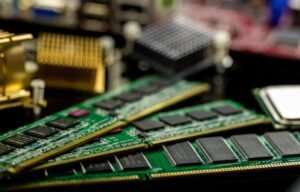Will Neuralink Increase IQ?
Neuralink, the brain-machine interface company founded by Elon Musk, has been making headlines with its ambitious goal of merging humans with artificial intelligence. One of the key questions surrounding this technology is whether it has the potential to increase human intelligence, or IQ. In this article, we will explore the concept of IQ, how Neuralink works, and the potential impact it may have on our cognitive abilities.
Key Takeaways:
- Neuralink is a brain-machine interface company founded by Elon Musk.
- The technology aims to merge humans with artificial intelligence.
- IQ refers to intelligence quotient and measures cognitive abilities.
- Neuralink has the potential to enhance specific cognitive functions.
- Long-term effects of Neuralink on IQ are still unknown and require further research.
IQ, or intelligence quotient, is a measure of a person’s cognitive abilities. It is typically determined through standardized tests that assess various aspects of intelligence, including problem-solving, memory, and reasoning skills. While there is ongoing debate about the exact nature of intelligence and whether it can be accurately captured by a single number, IQ continues to be widely used as a measure of intellectual ability.
Neuralink works by implanting tiny, flexible electrodes in the brain to create a direct communication pathway between the brain and computers. This enables real-time exchange of information, allowing individuals to control devices with their thoughts and potentially access vast amounts of information instantly. This technology has the potential to revolutionize the way we interact with technology and enhance our cognitive abilities in specific areas.
*Neuralink’s interface could enable people to communicate directly with machines, opening up a world of possibilities.
Enhancing Cognitive Abilities
While Neuralink’s technology holds promise for enhancing certain cognitive abilities, it is important to recognize that intelligence is a complex and multifaceted construct. **Neuralink has the potential to improve memory retention and recall** by allowing individuals to access and store information directly in their brains. The ability to retrieve information and knowledge with speed and precision could certainly have a positive impact on problem-solving and decision-making skills.
Moreover, Neuralink’s technology could potentially enhance learning capabilities. By facilitating direct connections between the brain and vast sources of information, individuals may be able to learn new skills and acquire knowledge at an accelerated pace. *Imagine being able to learn a foreign language in a matter of days, or instantly absorb complex scientific theories*.
However, it is important to consider the possible downsides and ethical implications of enhancing cognitive abilities through technology. Questions of equity and fairness arise, as not everyone may have access to these enhancements. Additionally, concerns around privacy and the potential for misuse or manipulation of information also come into play.
The Future of Neuralink
While the potential of Neuralink to increase IQ and enhance cognitive abilities is exciting, it is essential to approach this topic with caution and a healthy dose of skepticism. As with any emerging technology, thorough research and long-term studies are needed to fully understand the benefits and risks associated with Neuralink.
**The future possibilities of Neuralink are promising.** It has the potential to unlock new frontiers in human capabilities and revolutionize fields such as healthcare, education, and communication. However, we must also consider the ethical implications and ensure that access to these enhancements is fair and equitable for all.
Conclusion
Overall, Neuralink has the potential to enhance certain cognitive abilities and increase IQ. The ability to communicate directly with machines and access vast amounts of information could revolutionize our understanding of intelligence and our capacity to learn. However, further research, careful consideration of ethical concerns, and long-term studies are essential to fully grasp the potential impact of Neuralink on our cognitive abilities.

Common Misconceptions
Paragraph 1
One common misconception about Neuralink is that it will automatically increase a person’s IQ. While Neuralink has the potential to enhance cognitive abilities through the use of brain-computer interfaces, it does not directly increase IQ. IQ is a measure of a person’s intellectual abilities, including problem-solving, reasoning, and memory, and it is influenced by various factors such as genetics, education, and environment.
- Neuralink focuses on enhancing cognitive abilities rather than increasing IQ.
- IQ is determined by a range of factors including genetics, education, and environment.
- Neuralink does not directly measure or manipulate IQ levels.
Paragraph 2
Another misconception is that once a person integrates Neuralink, their intelligence will instantly improve. While Neuralink has the potential to enhance certain cognitive functions, such as memory or data processing speed, it is not a magic solution that will instantly make someone smarter. Like any technology, the benefits of Neuralink may vary depending on the individual and their specific circumstances.
- Neuralink may enhance specific cognitive functions, but it does not automatically improve overall intelligence.
- The effectiveness of Neuralink may vary depending on the individual.
- It takes time and practice for individuals to learn how to make the most of Neuralink’s capabilities.
Paragraph 3
Some people believe that Neuralink will create a society where everyone has superhuman intelligence. However, it is important to recognize that Neuralink is a voluntary technology and will not be accessible or desired by everyone. It is unlikely to completely eliminate the natural variations in intelligence that exist within the population.
- Neuralink is a voluntary technology that will not be used by everyone.
- Not everyone will have access to or desire to integrate Neuralink.
- Variations in intelligence will still exist within the population even with Neuralink’s existence.
Paragraph 4
There is a misconception that Neuralink will allow individuals to quickly acquire new skills or knowledge effortlessly. While Neuralink has the potential to facilitate faster learning by enhancing cognitive processing, it still requires dedicated effort and practice to acquire new skills or knowledge. Neuralink is not a substitute for the time and effort required for learning.
- Neuralink may facilitate faster learning, but it does not eliminate the need for effort and practice.
- Acquiring new skills or knowledge still requires dedicated time and effort, even with the use of Neuralink.
- Neuralink does not provide instant expertise or knowledge without learning and practice.
Paragraph 5
Finally, another misconception is that Neuralink will enable individuals to become “perfect” or eliminate all cognitive limitations. While Neuralink has the potential to augment cognitive abilities, it does not eradicate the fact that human cognition and intelligence are inherently limited. Neuralink may enhance certain aspects, but it cannot surpass the fundamental constraints of the human brain.
- Neuralink may enhance cognitive abilities, but it does not eliminate all cognitive limitations.
- Human cognition and intelligence have inherent limitations that cannot be completely eliminated by Neuralink.
- Neuralink cannot surpass the fundamental constraints of the human brain.

Neuralink Founders
Neuralink, a neurotechnology company, was founded by a team of talented visionaries who aim to revolutionize the way we understand and interact with the human brain. The table below showcases the founders of Neuralink and their notable accomplishments.
| Founder | Background | Notable Achievement |
|---|---|---|
| Elon Musk | Entrepreneur and CEO of SpaceX, Tesla, and more. | Revolutionizing the space, automotive, and energy industries. |
| Max Hodak | Entrepreneur and AI enthusiast. | Co-founder of Transcriptic, an automated molecular biology lab. |
| Dongjin Seo | Neuroscientist and biomedical engineer. | Research focused on neuromodulation and bioelectronic medicine. |
The Potential of Neuralink
Neuralink holds immense promise in enhancing human capabilities and treating neurological disorders. This table presents some incredible potential applications of Neuralink technology.
| Application | Description |
|---|---|
| Augmented Reality | Seamlessly integrating virtual information with our perception of reality. |
| Memory Enhancement | Improving memory formation, retention, and recall capabilities. |
| Neurological Disorder Treatment | Aiding in the treatment of conditions like Parkinson’s and epilepsy. |
| Brain-Computer Interfaces | Enabling communication between the brain and external devices. |
Timeline of Neuralink’s Progress
Neuralink has made significant strides in its quest to merge the human brain with artificial intelligence. The following table highlights key milestones in the development of Neuralink technology.
| Year | Development |
|---|---|
| 2016 | Neuralink founded with the goal of integrating the human brain with AI. |
| 2018 | Successfully testing threads implanted in a rat’s brain. |
| 2020 | Human trials begin, focusing on individuals with neurological disorders. |
| 2022 | Commercial release of Neuralink devices for neuroenhancement. |
Comparing Neuralink to Other Brain-Machine Interfaces
While Neuralink is a cutting-edge technology, it is essential to understand its position relative to other brain-machine interfaces. The table below highlights some notable similarities and differences.
| Interface | Features | Limitations |
|---|---|---|
| Neuralink | High-bandwidth data transfer, scalable and implantable, precision electrode placement. | Relatively invasive procedure, potential ethical concerns. |
| BrainGate | Wireless, sub-millimeter electrode arrays, potential for long-term use. | Limited number of electrodes, requires external processing equipment. |
| Openwater | Non-invasive imaging technology, portable and user-friendly. | Currently limited to detecting broad brain activity, less precise than invasive methods. |
Side Effects and Risks
Like any medical intervention, Neuralink technology comes with potential risks and side effects. It is crucial to weigh these factors while considering its implications. The table below outlines some possible risks associated with Neuralink.
| Risks | Description |
|---|---|
| Infection | Possibility of developing infections at the site of implantation. |
| Brain Hemorrhage | Risk of bleeding in the brain due to the implantation procedure. |
| Hardware Failure | Potential malfunction or failure of the implanted Neuralink device. |
| Psychological Effects | Possibility of mental health implications when interfacing with AI technology. |
Neural Network Training Speed
One of the critical factors in determining Neuralink’s role in increasing IQ is the speed at which it can train neural networks. This table presents a comparison of Neuralink’s training speed with traditional methods.
| Training Method | Training Speed |
|---|---|
| Standard CPUs | Days to weeks for complex models. |
| Graphics Processing Units (GPUs) | Hours to days for complex models. |
| Neuralink | Potential for real-time or near-real-time network training. |
Informed Consent and Privacy
As Neuralink delves deeper into human consciousness, ensuring informed consent and privacy protection becomes paramount. This table explores key considerations related to consent and privacy.
| Concerns | Description |
|---|---|
| Voluntary Participation | Ensuring individuals willingly choose to participate in Neuralink trials. |
| Data Security | Safeguarding sensitive neural data from unauthorized access or breaches. |
| Data Ownership | Determining who retains ownership rights over collected brain data. |
Neuralink’s Impact on Society
The potential effects of Neuralink technology on society are both revolutionary and thought-provoking. The table below illuminates various aspects of society that may witness significant changes.
| Aspect | Projected Impact |
|---|---|
| Education | Enhanced learning abilities and personalized educational experiences. |
| Workforce | Creation of new jobs and transformation of existing roles. |
| Healthcare | Improved treatments for neurological disorders and mental health conditions. |
| Privacy | Ethical dilemmas regarding brain data privacy and ownership. |
In conclusion, Neuralink represents a groundbreaking venture aiming to augment human intellect and address neurological disorders. While the tables provide intriguing insights into various aspects of Neuralink, it is crucial to assess the implications carefully. The potential offered by Neuralink’s technology opens a world of possibilities, but its impact on individuals and society must be navigated with caution and ethical consideration.
Frequently Asked Questions
Will Neuralink Increase IQ?
Question 1: How does Neuralink improve IQ?
Neuralink is a brain-computer interface technology that aims to enhance cognitive abilities. It does so by creating a direct neural connection between the brain and external devices. By allowing for bidirectional communication with the brain, Neuralink has the potential to stimulate and augment various cognitive functions, potentially leading to an increase in IQ.
Question 2: Can Neuralink boost intelligence levels in everyone?
While Neuralink has the potential to enhance cognitive abilities, its effectiveness may vary from person to person. Factors such as baseline intelligence, brain health, and other individual characteristics can influence the outcomes of Neuralink’s effects on IQ. Thus, the degree to which Neuralink can boost intelligence levels will differ for each individual.
Question 3: Are there any risks associated with Neuralink’s impact on IQ?
As with any new technology, there are potential risks associated with Neuralink’s impact on IQ. Since Neuralink involves invasive surgical procedures, there may be risks of infection, bleeding, or other complications. Additionally, altering brain functions and connectivity carries potential ethical considerations and unforeseen long-term impacts on cognitive abilities.
Question 4: Can Neuralink make someone a genius?
While Neuralink has the potential to enhance cognitive abilities, it is important to understand that intelligence is a complex construct influenced by various factors. While Neuralink may contribute to improvements in cognitive functioning, the notion of becoming a genius solely through Neuralink is an oversimplification. Other factors, such as education, upbringing, and environment, also play crucial roles in shaping intelligence.
Question 5: How soon will Neuralink be able to increase IQ?
As of now, Neuralink is still in the early stages of development and has primarily focused on medical applications. While there have been successful tests on animals, it may take several more years before Neuralink is fully capable of safely and significantly enhancing human cognitive abilities. It is an ongoing research project that requires extensive testing and regulatory approvals.
Question 6: What scientific evidence supports Neuralink’s potential to increase IQ?
As Neuralink is an emerging technology, extensive scientific studies assessing its long-term impact on IQ are limited. However, preliminary studies on animal models present promising results regarding Neuralink’s ability to augment cognitive functions. Nonetheless, further research and clinical trials are necessary to establish definitive evidence for its effectiveness in improving human intelligence.
Question 7: Can Neuralink be used for purposes other than increasing IQ?
Absolutely! While enhancing IQ is one potential application of Neuralink, its scope extends beyond this singular purpose. Neuralink can facilitate advancements in areas such as medical treatments for neurological disorders, communication interfaces for individuals with disabilities, and even potential immersive virtual experiences through direct neural connections.
Question 8: Are there any ethical concerns associated with Neuralink’s impact on IQ?
Yes, the development of Neuralink raises important ethical considerations. Altering cognitive abilities and enhancing intelligence through invasive technologies poses questions of fairness, access, and potential societal inequalities. It is crucial to address these concerns and ensure responsible and equitable usage of Neuralink to avoid any potential negative implications.
Question 9: Are there any limitations to Neuralink’s impact on IQ?
While Neuralink holds promise in augmenting cognitive abilities, it is not a universal solution that can instantly unlock unlimited intelligence. Neuralink’s impact on IQ will be influenced by multiple factors, including the individual’s existing cognitive abilities, overall brain health, and the effectiveness of the technology itself. Additionally, Neuralink may have limitations in improving certain aspects of intelligence that are not entirely understood at this stage of its development.
Question 10: How can one acquire Neuralink to potentially increase their IQ?
At present, Neuralink is still undergoing development and has not been approved for widespread public use. To explore the possibilities of Neuralink for enhancing IQ in the future, individuals would need to actively follow the progress of Neuralink’s development and consultation with medical professionals knowledgeable in the field of brain-computer interfaces.




